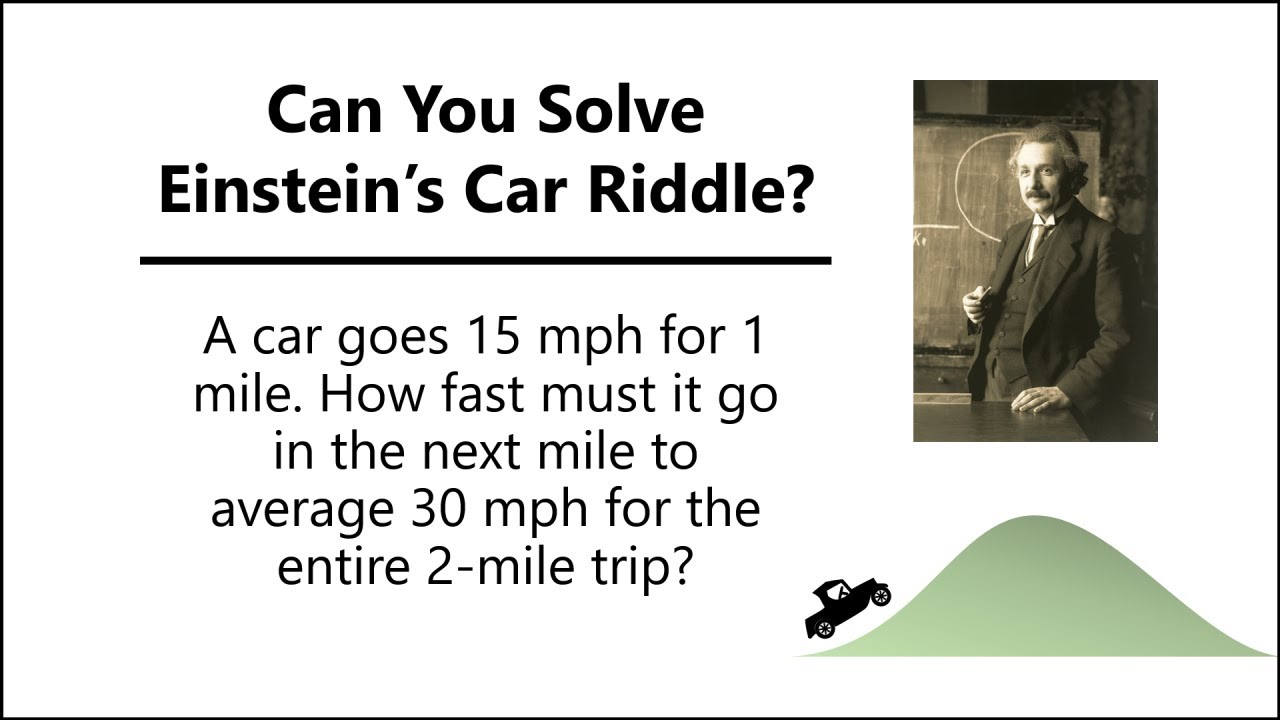In 1934, psychologist Max Wertheimer sent his friend Albert Einstein the folllowing physics puzzle.
A car goes 15 miles per hour for one mile. How fast must it go in the next mile to average 30 miles per hour for the entire 2 mile trip?
Einstein initially tried to solve the problem intuitively, but was unable to. He then set up the problem formally and worked it out, replying to Wertheimer that he didn’t see the essential trick until he calculated the answer.
Give it a try. Do you immediately see the answer? Or, like Einstein, can you calculate it and see what’s going on?
The GPT-3 autoregressive language model developed by OpenAI and presently released in a beta test program in which Fourmilab is a participant has demonstrated impressive capabilities in natural language generation, processing, and tasks such as answering questions and solving word problems. I thought I’d put it up against Einstein on this puzzle. I prompted GPT-3 with the problem exactly as stated above. Its initial reply was:
A: The car must go 30 miles per hour in the next mile to average 30 miles per hour for the entire 2 mile trip.
Because GPT-3 is not deterministic, I tried again a few times, and sometimes received the equivalent but more terse reply:
A: The car must go 30 miles per hour in the next mile.
Is this right? Do you agree with GPT-3?
Here is the answer worked out in detail.
